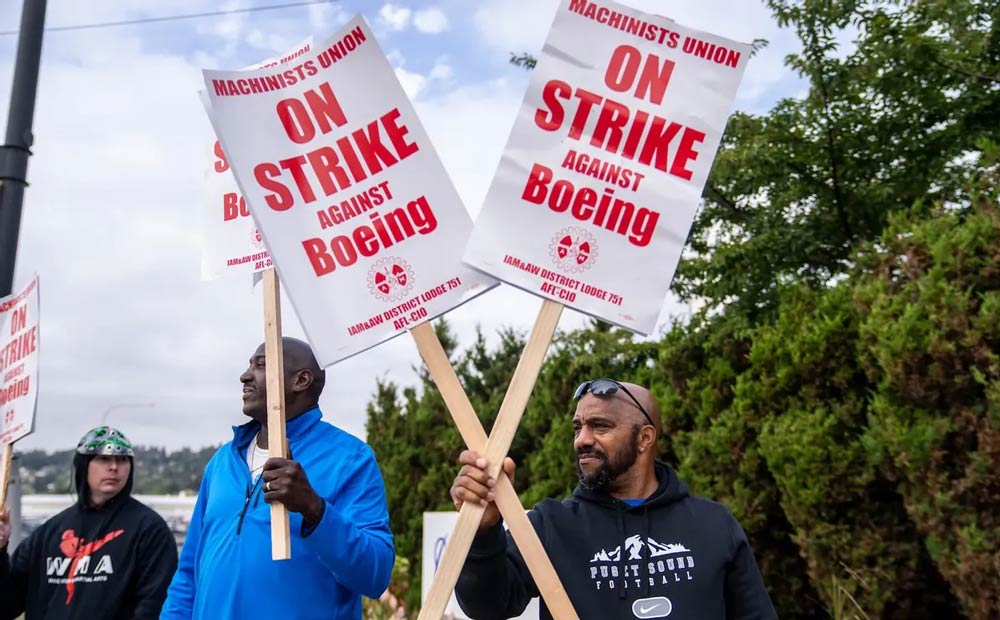Boeing machinists have voted against a new labor contract, extending a strike that has lasted over five weeks. The union rejected the proposal with 64% voting against it, despite the offer including a 35% wage increase over four years, a $7,000 ratification bonus, and increased 401(k) contributions.
Key Details
- Strike Duration: The strike began on September 13, following an earlier proposal rejection.
- Financial Impact: Boeing is losing approximately $1 billion monthly due to the strike. The company also reported a $6 billion quarterly loss, its largest since 2020.
- CEO’s Priority: New CEO Kelly Ortberg is focused on resolving the strike to recover from ongoing safety and quality issues. Ortberg emphasized the importance of rebuilding relationships and getting employees back to work.
- Workforce Reductions: Boeing plans to cut 10% of its global workforce, which totals 170,000 employees.
Union’s Stance
The International Association of Machinists and Aerospace Workers (IAM) initially sought a 40% wage increase. The rejection of the latest offer highlights ongoing dissatisfaction, particularly regarding the lack of pension plans in the new proposal. Union President Jon Holden stated that while progress has been made, it is insufficient to meet members’ demands.
Production and Supply Chain Challenges
The strike has halted most of Boeing’s aircraft production in the Seattle area. This disruption extends to the aerospace supply chain, with Spirit AeroSystems already furloughing 700 workers due to the strike’s impact.
Moving Forward
Boeing agreed to build its next aircraft in the Pacific Northwest, addressing union concerns about production shifts to non-union factories. The union aims to return to negotiations to reach a satisfactory agreement.
The ongoing strike adds to Boeing’s challenges, which include increased scrutiny following safety incidents earlier this year. The company is also working to ramp up production of its 737 models amidst these difficulties.











